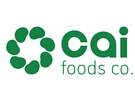"The truth is, most people have never tasted real wasabi. They're eating green-dyed horseradish, mass-produced and far removed from the complex aroma and nuanced heat of the real thing. We decided it was time to change that, right here in the U.S.," says Shun Sano, co-founder of Cai Foods, an indoor wasabi grower.
After a dull sushi dinner that served them 'fake wasabi' which cost them $150, Max and Shun set their sights on authentic, Japanese-style wasabi cultivation. Fast-forward to today, and the team is working on the launch of a 20,000 sq. ft. vertical farm in Western Massachusetts, designed to mimic the growing conditions required to grow wasabi the traditional way.
 © Rebekka Boekhout | FP.comMax and Shun
© Rebekka Boekhout | FP.comMax and Shun
Taught by the masters
Spending two months in Japan to gain knowledge of traditional Japanese wasabi cultivation, the duo learnt how to make the crop financially feasible in an indoor setting. In Japan, wasabi is cultivated in two regions only, where it needs spring water that's constantly running. Never river, water due to contamination. Plus, the fresh spring water is drying up, which has caused production to drop by about 70% over the last twenty years, as Shun explains. Tackling the cultivation of wasabi indoors, Shun and Max designed a new facility that enables them to mimic the right growing environment for the fragile crop, at a scale.
"Our biggest advantage is growing the same high-quality wasabi plants as they do in Japan, but saving the costs of importing for customers," he adds. The POC farm, a compact modular 4 by 4 setup, was formerly used on another farm in Michigan. To guarantee quality produce, Cai Foods formed a partnership with a Japanese grower and gained permission to grow from tissue cultures that have never before left Japan. Using a drip-like water system that's constantly circulating, with optimal nutrition, light, and air conditions, allows the team to produce wasabi the same way they do in Japan, but twice as fast. "Outdoor production takes 24 months. In controlled conditions, we're aiming for 10."
"A lot of vertical farms have gone under, but the infrastructure is still there. Wasabi doesn't even require intense lighting. Therefore, we can easily retrofit those facilities and extend our footprint without starting from scratch, like our trial farm," Shun says optimistically.
 © Rebekka Boekhout | FP.com
© Rebekka Boekhout | FP.com
Serving 55 restaurants
Currently in the final design phase, the facility is set to open in June 2025 with the first harvest projected for early 2026. And even then, production will be limited as Cai Foods can only serve about 55 restaurants with the output of this facility. "However, we're aiming to quickly scale to bring our wasabi to all. For now, we're launching a reservation system for the first harvest to avoid overpromising, as consistency is everything," Shun affirms.
The company isn't just targeting fine-dining. While Michelin-starred chefs have already expressed interest, Shun and Max's long-term vision includes supplying specialty grocery stores and co-developing consumer-packaged goods. "Wasabi is a zero-waste crop. The rhizome is used in sushi, but the leaves and stems can be powdered for supplements or flavoring. Think wasabi chips, wasabi paste, even functional food," Shun points out. "Today, you'll find wasabi online for $400 a pound," Shun shares. "Now tariffs on imported wasabi continue to rise, our business case becomes even stronger. We can offer it for $160, but then grown locally, and authentically."
Instead of competing at scale at this moment, Cai Foods will be competing on its story, quality, and supply chain efficiency. "We're not trying to be the biggest. We want to be the provider of real wasabi in the US, whether that's fresh rhizomes or product extensions down the line. Therefore, the startup plans to quickly scale its facility to serve the entire country if time allows, and dominate the wasabi market. "Much like truffles starting as a small Italian delicacy, we envision wasabi to be the next ultimate condiment and for us to be the dominant player," Shun concludes.
 © Rebekka Boekhout | FP.com
© Rebekka Boekhout | FP.com
For more information:
Cai Foods
Shunsuke Sano, co-founder
+1(914) 310 9812
shun@caifoods.co
www.caifoods.co

